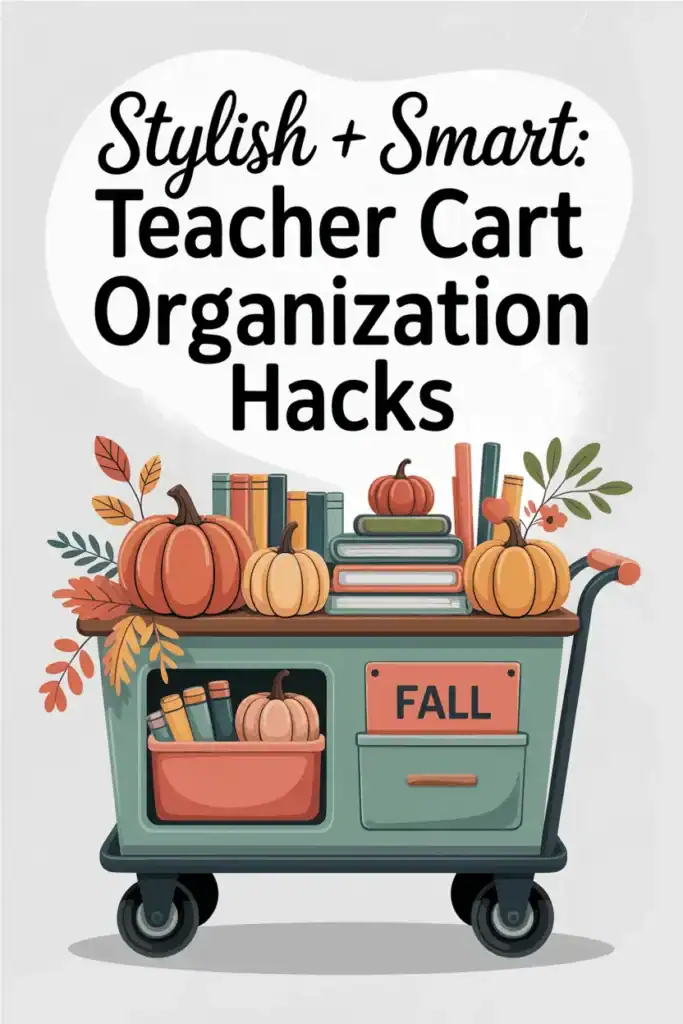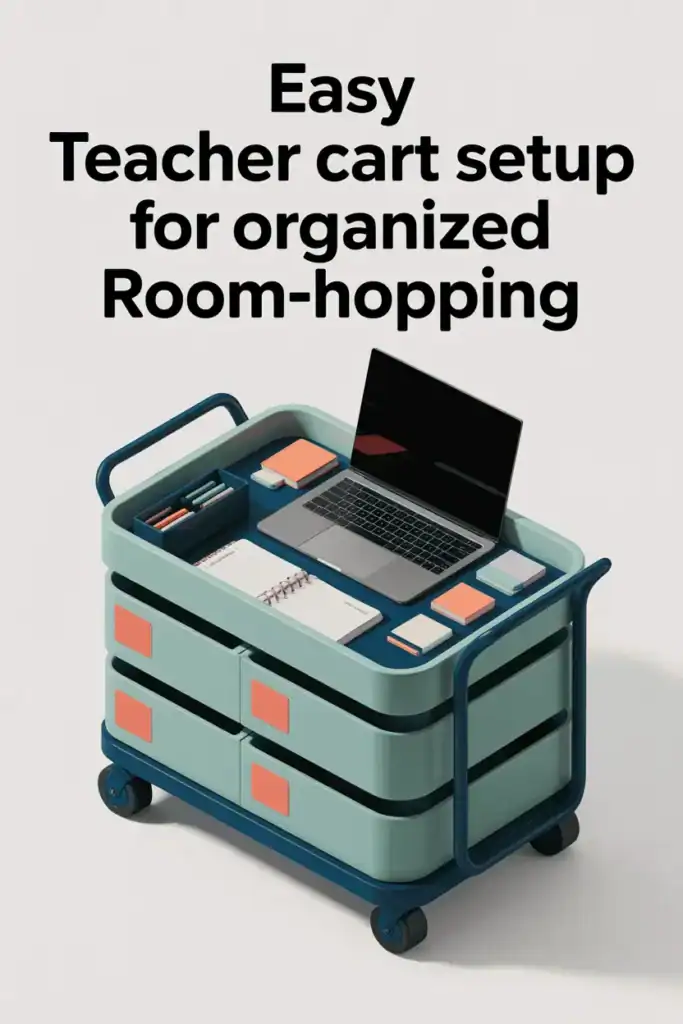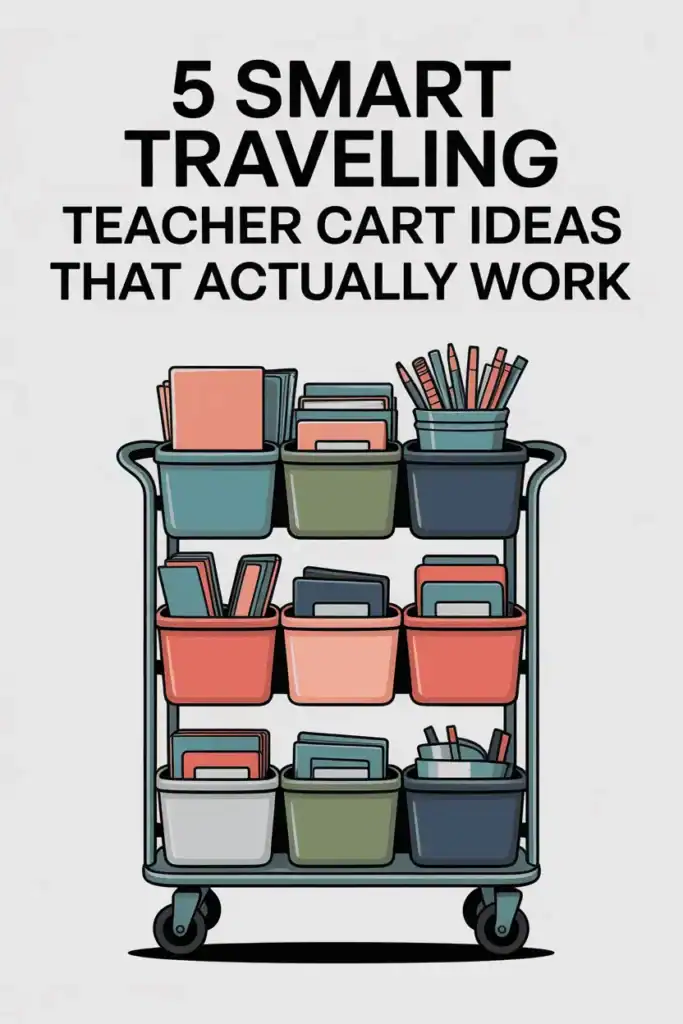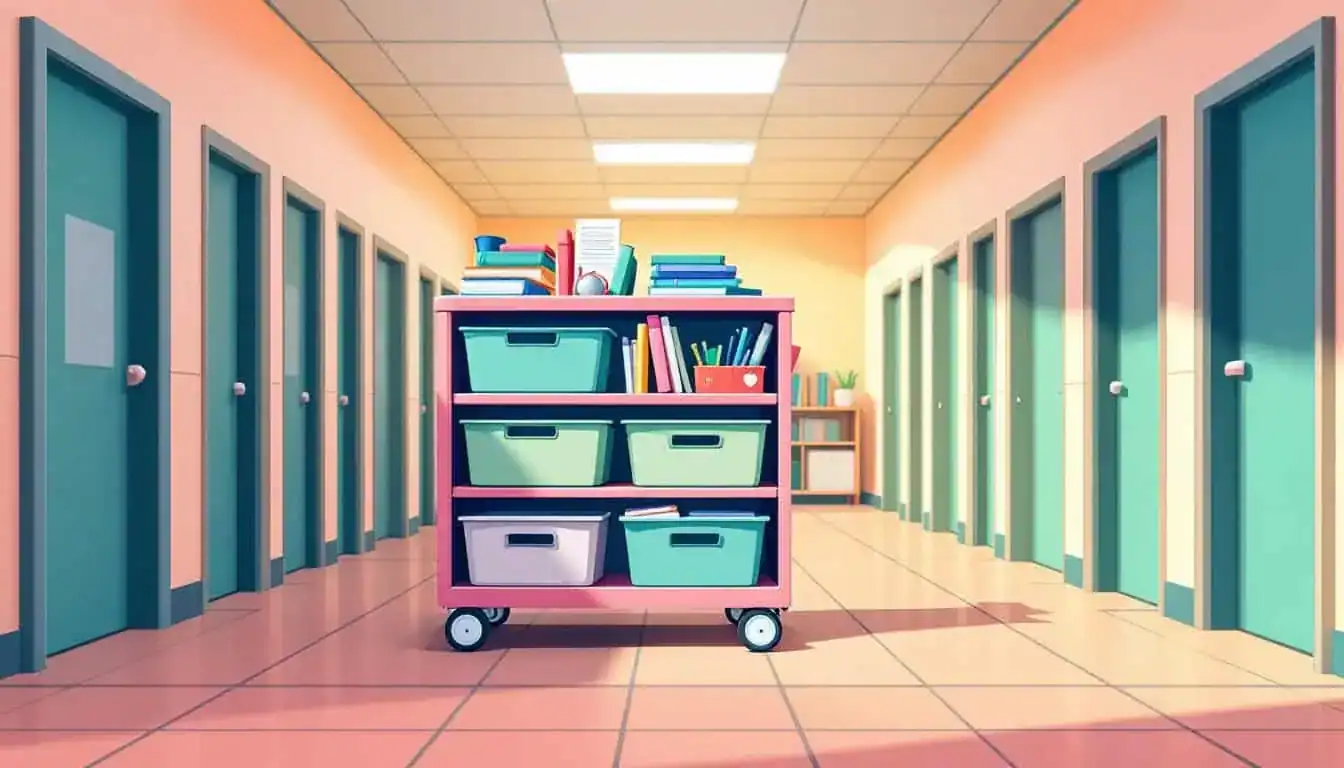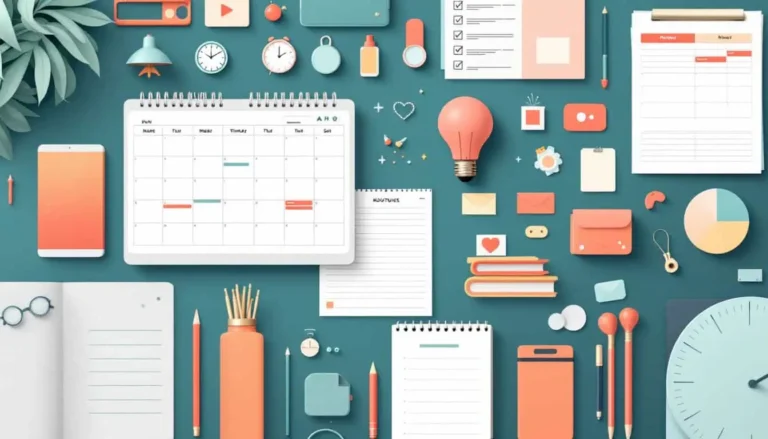5 Traveling Teacher Cart Ideas to Stay Organized
So you just found out you'll be teaching on a cart this year.
First of all, deep breath.
I've been there.
As a former elementary music teacher myself, I know that teaching from a cart is rough.
But I promise there are ways to make it work without completely losing your mind in the process.
Let me share what I've learned from years of rolling through hallways with my teaching life balanced precariously on wheels.
Here are some traveling teacher cart ideas to help you stay sane and organized.

Free ADHD Organization Worksheets for ND Teachers
Offload your thoughts, plan your day, and gently reflect with these printables. Designed to add structure without the overwhelm.
This article contains affiliate links. If you purchase through these links, I will earn a small commission at no extra cost to you.
Finding Your Perfect Cart Partner
Your cart isn't just a storage container, it's your mobile classroom and command center.
Look for sturdy wheels that actually turn 360 degrees.
This is non-negotiable when you're navigating crowded hallways while mentally rehearsing your lesson intro.
If possible, get a cart with drawers rather than just shelves.
Open shelves are basically an invitation for everything to slide off when you hit that one bumpy transition between the carpet and tile.
And for little hands to veeeeeeeeeeeeeeeery curious about all the shiny objects.
Consider how much weight your cart needs to hold, and don't forget to account for your coffee mug holder.
That's a survival tool, not an accessory.
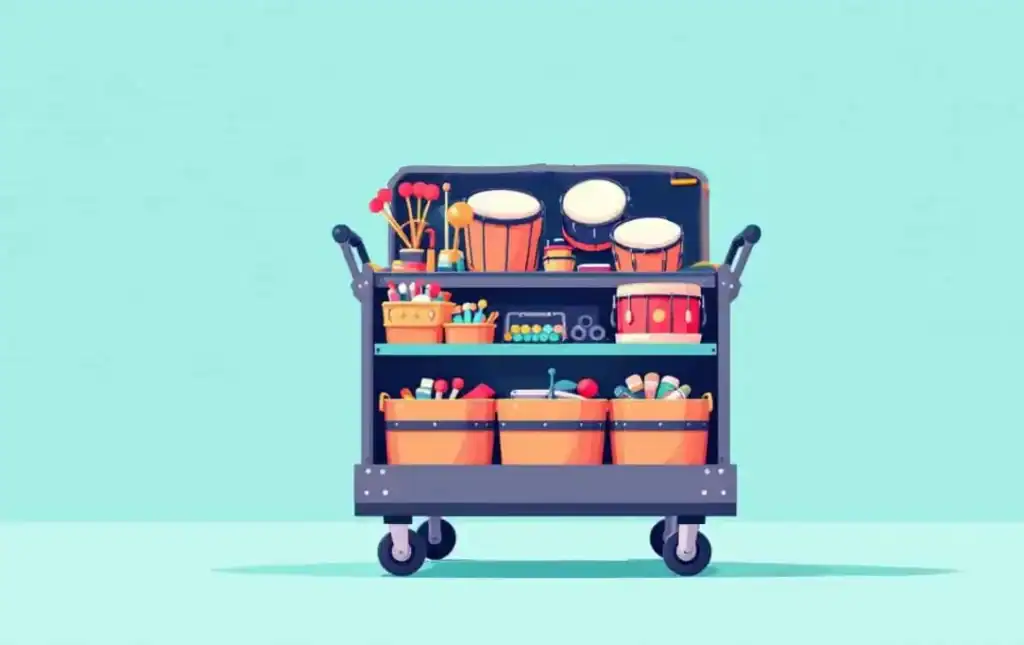
What to Keep on Your Cart
I've found that less is actually more when it comes to cart supplies.
Keep your absolute essentials accessible on top, closest to you.
You want it where you can grab it when you want it.
And again to discourage other friends from doing so.
For me, that was my clipboard with seating charts, iPhone, laptop, erasable pens, and a couple of dry erase markers.
It also served as a sort of self-accommodation.
The less digging around you have to do, the better.
Music teachers, unpitched percussion instruments are your friends – they're light and versatile.
But you can also bring at least a couple of standard-size xylophones.
(They do make some very compact ones, as well.
Although I didn't try them.)
I always kept a small “emergency kit” with tissues, band-aids, and extra masks tucked into my tote bag.
That zipped. Any kind of open container needs to have a cover of some kind.
Oh, and headphones.
Always keep a pair of headphones for students in case they don't have any.
Making Organization Actually Happen
Let's be real – staying organized is already challenging with ADHD or other ND traits.
When you don't have a firm location to call your own, it's much harder.
Much, much harder.
So the simpler, the better.
On the top shelf you can keep a few baskets with your unpitched percussion.
(Think rhythm sticks in one basket, shaker eggs in another.)
On the bottom shelf you can have larger items like a tubano drum and a xylophone.
You can of course also use clear containers (or color-coded ones).
I just really kept things as basic as possible.
(As a side note, the cart I was given to teach off of what quite utilitarian but it worked.
It looked like this one, but I'm not sure if it was this brand or not.
Mine had a coffee holder. Thank goodness.)

Getting Help Without the Shame
It took me way too long to realize I didn't have to do everything myself.
Student helpers are everything.
I would assign instrument helpers in each class who would distribute and collect.
Not only did this save my sanity, but the kids loved having this special job.
Talk to the teachers whose rooms you visit regularly.
If you need access to the ActivPanel but it's not being used?
Ask if it's something you could help set up for next time.
Be kind to yourself on the hard days.
Sometimes, despite your best efforts, you'll forget something or arrive at a class flustered and unprepared.
It happens to all of us, ADHD or not.
I would always have a few backup activities ready.
Stick figure movement cards were the best.
Print, laminate, and have a student help hold them up for the class.
They get their warm-up in while you are busy connecting devices.
Quick Survival Tips
Always leave 5 minutes earlier than you think you need to move between classes.
Those minutes disappear quickly when you're trying to pack up while answering “just one more question.”
Keep a water bottle with a secure lid on your cart – hydration is important.
And you probably won't have time to dart back to your lounge in between meetings.
Text yourself notes via dictation as you mosey down the hallway.
Use a screen reader app like Speechify to help you remember written information as you roll around.
Remember that your creativity and flexibility as an ND teacher are major strengths.
Teaching from a cart doesn't change that.
You may need to practice new skills and strategies.
But luckily?
We're often naturally good at thinking on our feet and finding creative solutions in the moment.
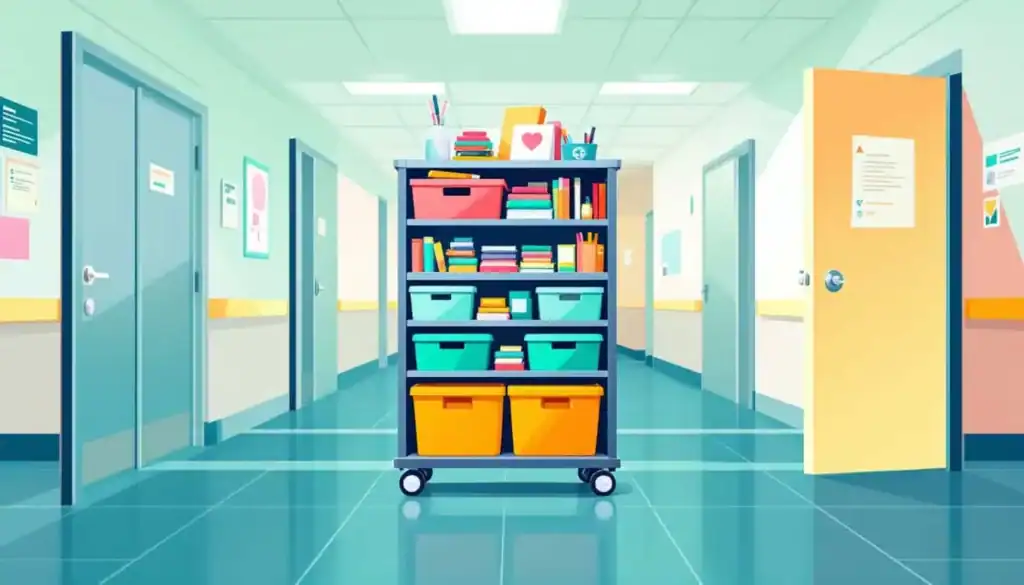
Final Thoughts
Teaching from a cart isn't anyone's first choice.
It's challenging, often frustrating, and can amplify our executive function struggles.
It can also feel like a low blow, emotionally.
If it's temporary, that's great.
You now have higher empathy for others in similar situations.
If it's not, it is time to get serious about making your cart really your own.
With the right setup and strategies, you can make it work while staying grounded in the process.
Join the Community
Want to connect with other like-minded educators?
We share ideas, ask for help, vent, and generally support each other.
Visit our Facebook group and take it one step at a time.
You've got this! ❤️
Found Something Helpful? I'd Be So Grateful If You'd Please Pin One of These Images!
It truly helps my blog reach more teachers like you. Thank you!
